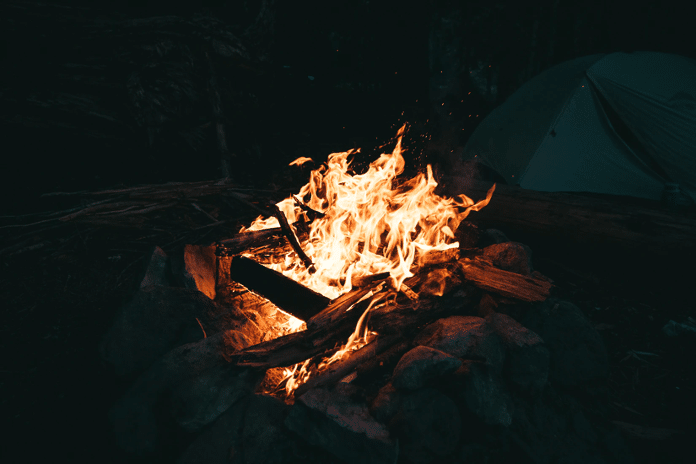Building the perfect campfire is a skill that any camping enthusiast would have to learn. It’s the cherry on top on any camping trip after a hard yet fun day outside. Let’s face it though, there’s no one formula that can guarantee the “perfect” campfire. Of course, you have a wide variety of options for the arrangement of rocks and the materials you can use, but you only have to understand the basic principles of combustion to learn how to build a campfire.
Position the Fire Triangle
Knowing where to position your campfire is essential in building the perfect campfire. Position your campfire at least ten feet away from anything flammable like your tent or overhanging trees. Ideally, try to place it in an area that’s sheltered from the wind with enough distance to protect people and the environment. A flat ground is ideal to prevent flying embers from rolling down from any ramp.
If you have attended any science class in the past, you may already be familiar with the three fundamentals of combustion that is the fire triangle: fuel, heat, and oxygen. Combining all three in proper proportions is required to set the perfect campfire. Managing them, however, is another story.
Create the Fire Bed
Look around to see if your campsite location has designated fire pits. But if you’re camping in the wild, whenever possible, always use a pre-existing fire bed. If none of these are available, you can always make your own. It should be on exposed earth and not grass. You can dig grass away if there’s no such area, but always check if there are local guidelines that prohibit touching the grass or plants around the area.
Make a Ring of Rocks Around
You may be wondering what these are for, but this is good practice to help contain the fire as much as possible. Dry rocks are always preferred, at about the size of a clenched fist, and properly space them apart for some air can circulate.
Gather some Wood
We always want dry wood. Avoid any that bends without snapping, looks a bit too green, or too wet, as these most likely wouldn’t burn well. Fallen wood is your best choice as these are better for the environment. Every campfire starts with good tinder as these catch fire easily and burn fairly easily. Some good sources include wood shavings, dry leaves, pine needles, dry moss, straw, newspaper, dryer lint, and char-cloth.
Lay Your Fire
Photo Credit: Unsplash, Matt Whitacre
You have choices on how to lay your fire depending on what you’ll use it for, but almost all start with a teepee or lean-to fire laying structure. According to Connor Fitzgerald, here are some ways that you make them:
- Tepee: Place a bundle of tinder in the center of your fire bed and then build a tepee around and above it using your kindling wood. Leave a small gap for lighting and to let air in. Gradually build this up with kindling and then add to it with some of your smaller fuelwood. With both the kindling and the fuelwood try to keep the thicker ends at the bottom.
- Lean-to: Stick a long piece of kindling into the ground at about a 30-degree angle – this will be your support stick. It can also be leaned against a bigger log instead.
Light your Fire
This is quite straightforward, but try to light your campfire starting from the tinder that’s in the center as quickly as possible.
Add to your Fire to build it up
Below are a number of choices you have in building up your fire. Remember that whichever you choose, build your campfire slowly but steadily. One strategy is working through the fuel starting from the thin branches then to the larger logs.
Photo Credit: Dreamstime
Ready to build your campfire now? These tips will surely help you in making your campfire as perfect as possible. Of course, like any skill, campfire-building should be practiced to ensure its success. Keep in mind that this can still be a dangerous task if you’re a first-timer, so try to make a campfire only if you’re confident about this skill. For children, only make campfire if your guardian is around for assistance. It could very well be something to brag about, but most importantly it’s a life-saving skill that could help you in dire times while out camping.
